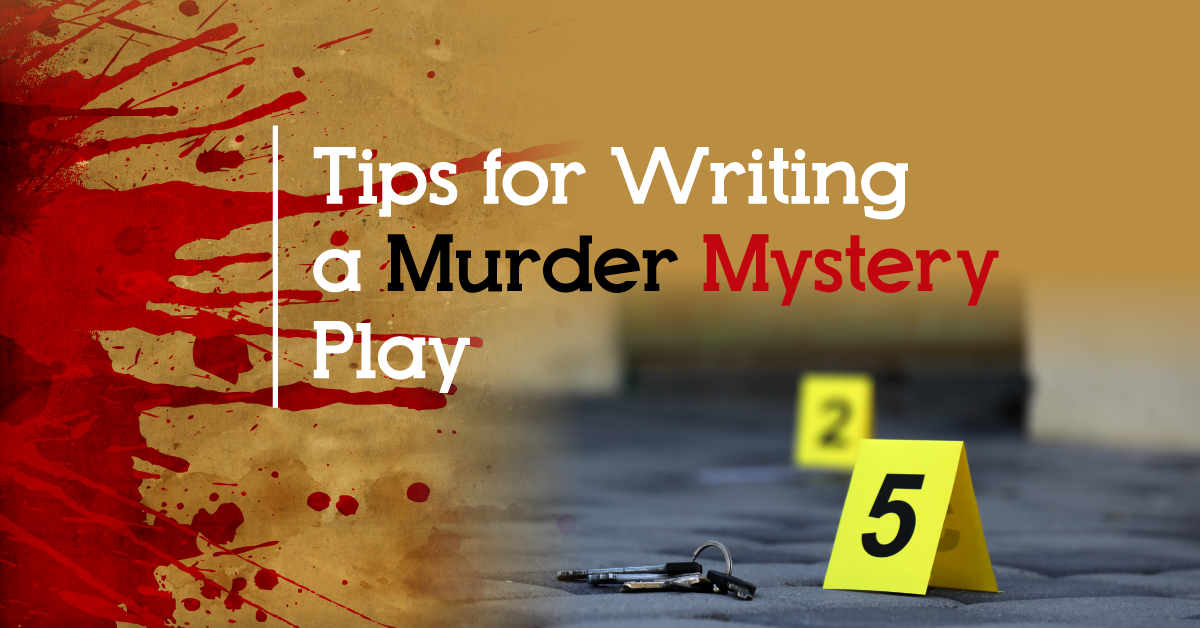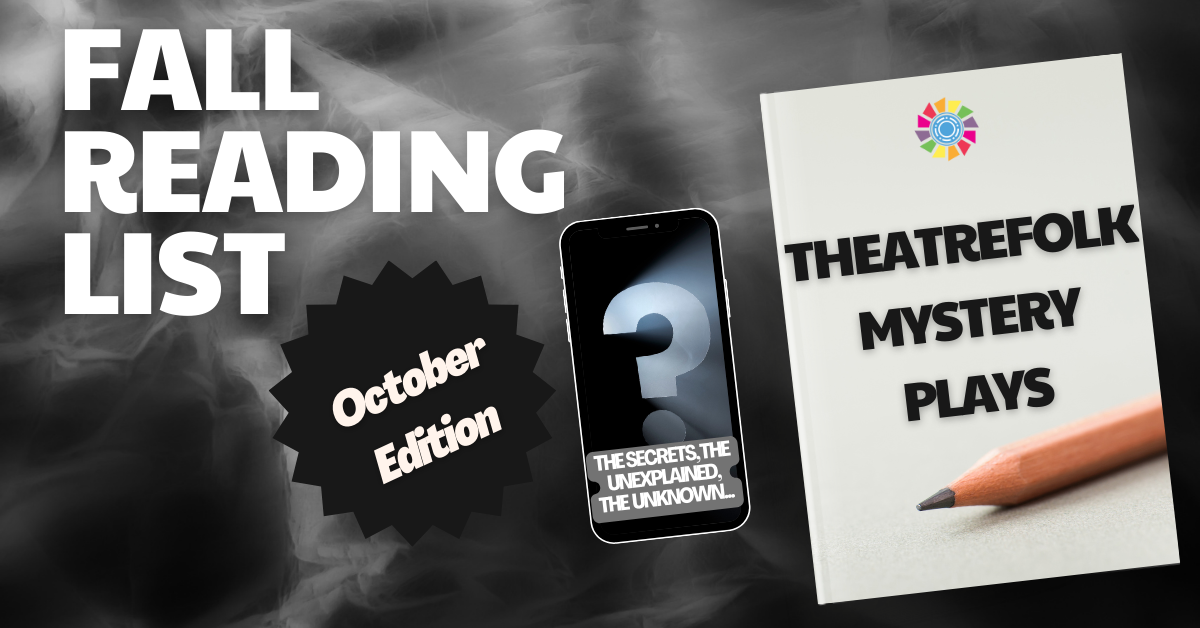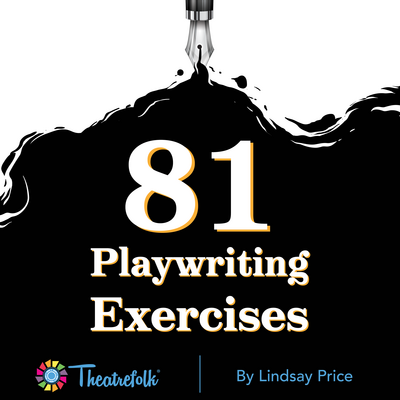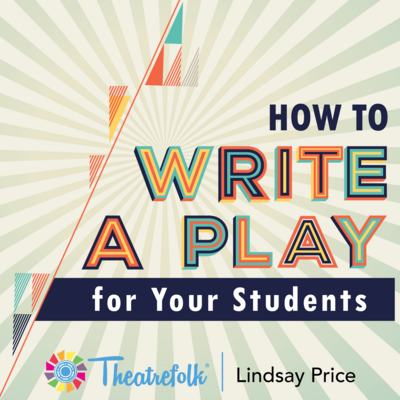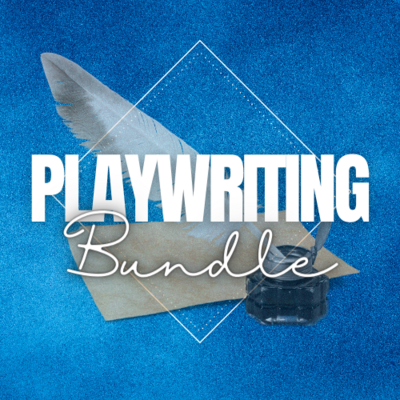5 Tips for Writing a Murder Mystery Play
Whodunnit? Murder mystery plays are a lot of fun for both performers and audiences. Audiences get to be detectives and discover throughout the show who committed the crime, while the actors get to embody all sorts of interesting characters, all with a similar goal: to get away with murder!
Murder mysteries are like spiderwebs — there are tons of connecting threads that all come together to make one fascinating and beautiful creation. They require a slightly different kind of planning, but it’s worth it to create a fun and intriguing piece of theatre. Read on for five tips (and five accompanying tasks) for writing a murder mystery play.
1. Choose your subgenre.
Despite the fierce title, murder mysteries can be tailored to the playwright’s liking. They can be bloody and gory thrillers, “cozy” mysteries (a lighter mystery with clean language, and all violence occurring off-stage), or anything in between. A murder mystery might involve ghosts and the supernatural, or meddling kids might solve it rather than a detective. It could be set in a courtroom with a judge and jury, or in an abandoned house in a spooky forest. It might even involve audience participation! Students will need to decide how dark they want their mystery, and who their target audience is.
Task: Have students determine what subgenre of murder mystery they want their piece to be (thriller, horror, noir, courtroom drama, dark comedy, farce, cozy, supernatural, etc.) and who their target audience is (adults, teens, elementary school children, families). Note: This might change as they work through the tasks. That’s ok! This is a starting point.
2. Map out your work.
Murder mysteries generally have lots of characters. First and foremost: the victim. Who dies? When, where, and how? Then, there’s the rest of the motley crew: the victim’s various family members, friends, confidantes, lovers, enemies, employees or colleagues, and of course that one seemingly random character with a mysterious connection that is revealed later in the play. These are the suspects — the characters who have been accused of committing the crime. Not only are these characters connected to the victim, but they’re generally connected to at least one other character somehow.
Task: Students will create a map of their characters, showing their connections to each other. Put the victim in the middle and the rest of the characters around them. Draw a line between each connected character. Some characters will have more connections than others. Students can sketch this on paper or a whiteboard, make a digital version, or create the classic cork-board-and-yarn setup (also known as a “conspiracy board,” “evidence board,” or “murder map”).
3. Determine the motives.
Every character, including the main character, the detective, and even the narrator if there is one, needs to have a motive for the murder. Why did they want the victim dead? What’s in it for them? What do they stand to gain (or lose) from the victim’s death? Do they have an alibi? An alibi is a reason why the suspect couldn’t have committed the crime.
Task: Determine a motive for each character, and an alibi if they have one. Add it to the character map created in Task 2.
4. Work backwards.
Writing a murder mystery takes a lot of planning. This is one genre where it’s useful to work backwards — start with the final outcome of the piece and move backwards, adding details and perplexity, rather than trying to unravel everything at the beginning. Determine the crucial moments of the story, including scenes like the introduction of the characters, the murder itself, the discovery of the murder, the gathering of the witnesses, the sharing of alibis, the final outcome of the murder mystery — Who actually committed the crime? How did they do it? — and work backwards to the beginning of the piece. Include any important details that are specific to the piece. If students want to add complexity, they might try to have two scenes occur at the same time.
Task: Make a backwards outline of the murder mystery. Write each important moment on a separate index card and attach the cards to a board with pins or magnets, starting from the end of the play and working back to the beginning. This way you can shift around, adjust, or eliminate the moments as necessary.
5. Show and tell.
With the solid work students have done creating the outlines for their murder mystery plays, they can get started writing scenes. It’s easy to get lost in dialogue with murder mysteries — there’s a lot of information you need to relay. Remind students that plays are a visual medium and that the action of the show must be shown as well as spoken about. What scenes could you include with more action than dialogue? What can you show the audience that the other characters don’t see? What clues will be discovered when, and by whom? What red herrings can you include? (A red herring is a clue or piece of information that is intended to mislead or distract from the real issue at hand, and is frequently used in murder mysteries.)
Task: Get writing!
Be sure to check out some of Theatrefolk’s awesome murder mystery plays, such as She Wrote, Died, Then Wrote Some More and The Plucky Pie Murder.
Related Articles
81 Playwriting Exercises
by Lindsay Price
81 exercises that can be used to get students in the habit of writing on a regular basis.
How to Write a Play for your Students
by Lindsay Price
You’ve chosen to write a play for your students! Where do you start?
Resource Bundle - Playwriting
Use these 4 Playwriting drama teaching resources to make playwriting possible with your students. Great for warm-ups, prompts, writer's block and more!
